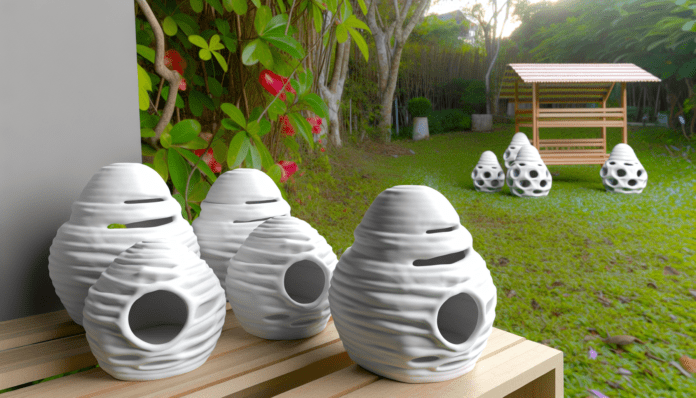In a fascinating intersection of art, architecture, and biology, artist and designer Kiran Pereira is using 3D printing to create ceramic shelters for insects. These intricately designed structures are not only visually captivating but also serve a vital ecological purpose—providing safe habitats for pollinators and other beneficial insects in urban environments.
3D Printing Meets Biomimicry in Ceramic Design
Pereira’s work is deeply inspired by natural forms and biological systems. Drawing from the principles of biomimicry, she designs insect homes that mimic the textures and structures found in nature, such as honeycombs, coral, and plant cells. These designs are then brought to life using ceramic 3D printing, a process that allows for high precision and organic complexity.
The use of ceramics is intentional. Unlike plastic or metal, ceramic is a natural, breathable material that can regulate temperature and humidity—ideal conditions for many insect species. The porous nature of ceramic also allows moss and other small plants to grow on the surface, further integrating the shelters into their natural surroundings.
Supporting Urban Biodiversity Through Additive Manufacturing
Urbanization has led to a significant loss of natural habitats for insects, particularly pollinators like bees and butterflies. Pereira’s 3D printed insect homes aim to counteract this trend by reintroducing microhabitats into cityscapes. These structures can be installed in parks, gardens, rooftops, and even building facades, offering refuge to insects that play a crucial role in pollination and ecosystem health.
By leveraging additive manufacturing, Pereira is able to rapidly prototype and customize each design to suit different species and environments. This flexibility is key to addressing the diverse needs of urban wildlife. Moreover, the digital nature of 3D printing means that these designs can be shared and replicated globally, encouraging a wider adoption of insect-friendly architecture.
From Art Installation to Environmental Solution
What began as an artistic exploration has evolved into a practical environmental solution. Pereira’s ceramic insect homes have been exhibited in galleries and design festivals, sparking conversations about the role of design in ecological stewardship. But beyond the art world, her work is gaining attention from urban planners, environmentalists, and educators who see the potential for these structures to be integrated into sustainable city planning.
In addition to their ecological benefits, the insect homes also serve an educational purpose. They help raise awareness about the importance of insects in our ecosystems and the threats they face due to habitat loss and climate change. By making these issues visible and tangible, Pereira hopes to inspire more people to take action in support of biodiversity.
The Future of Eco-Conscious 3D Printing
Pereira’s project is part of a growing movement that uses 3D printing not just for industrial or commercial purposes, but as a tool for environmental innovation. As additive manufacturing technologies become more accessible and sustainable, we can expect to see more projects that blend design, science, and ecology.
Whether it’s creating coral reef structures to support marine life or printing biodegradable planters that decompose into the soil, the possibilities for eco-conscious 3D printing are vast. Pereira’s insect homes are a compelling example of how technology can be used to reconnect urban spaces with the natural world—one ceramic shelter at a time.
Source: My Modern Met

